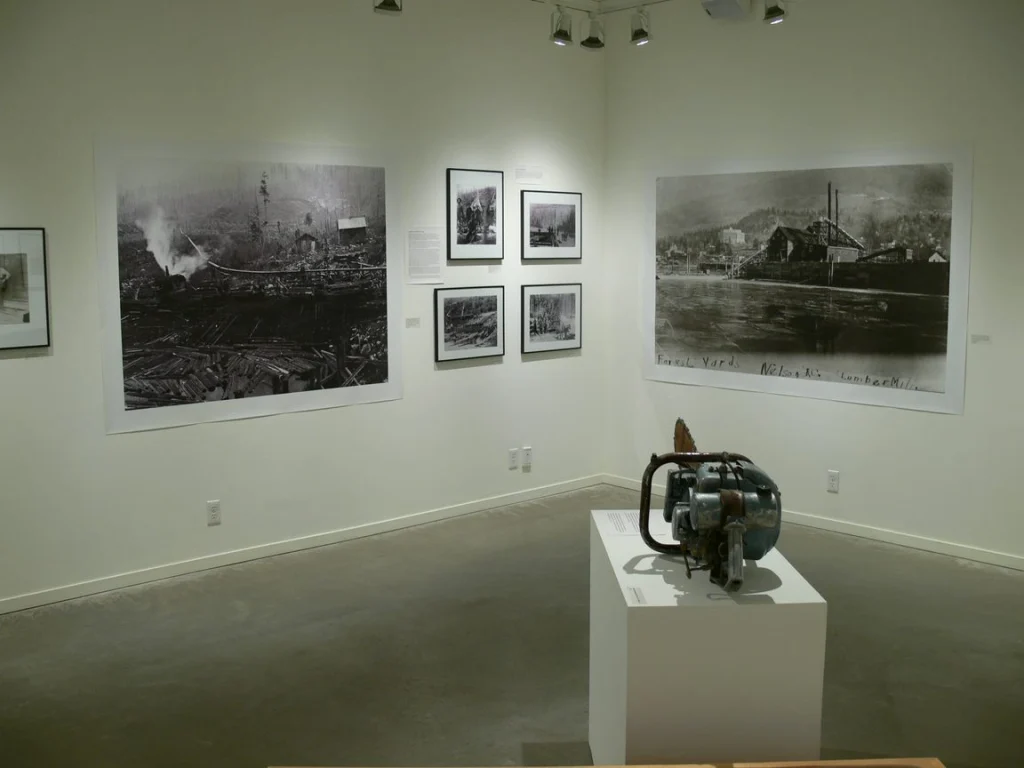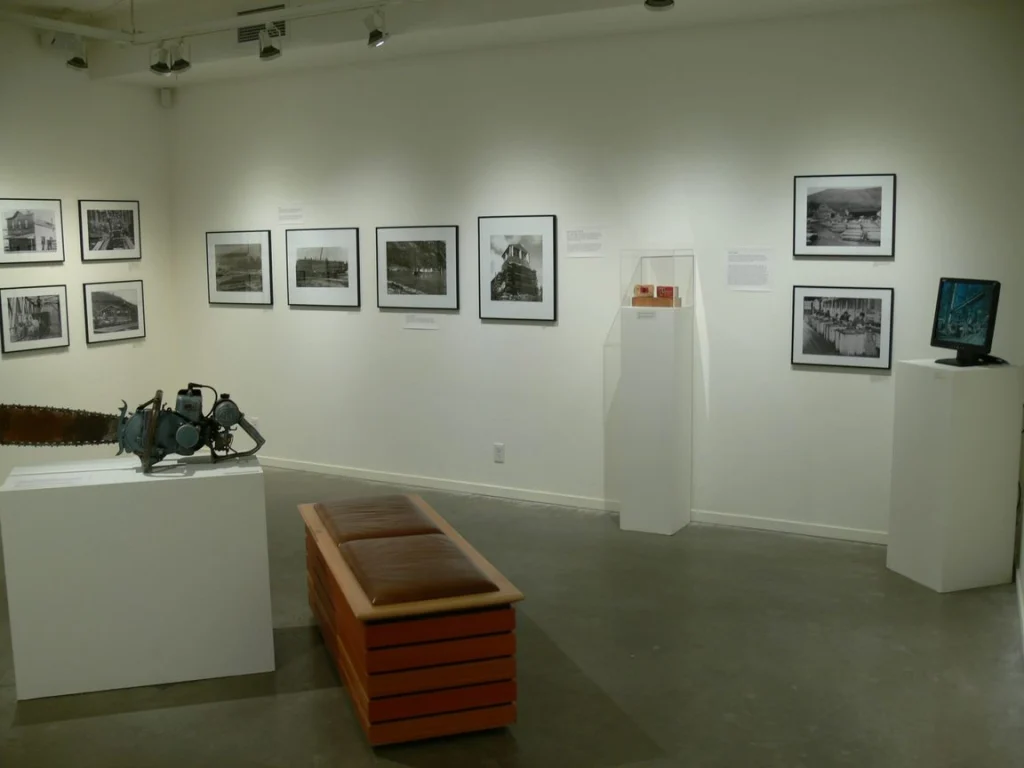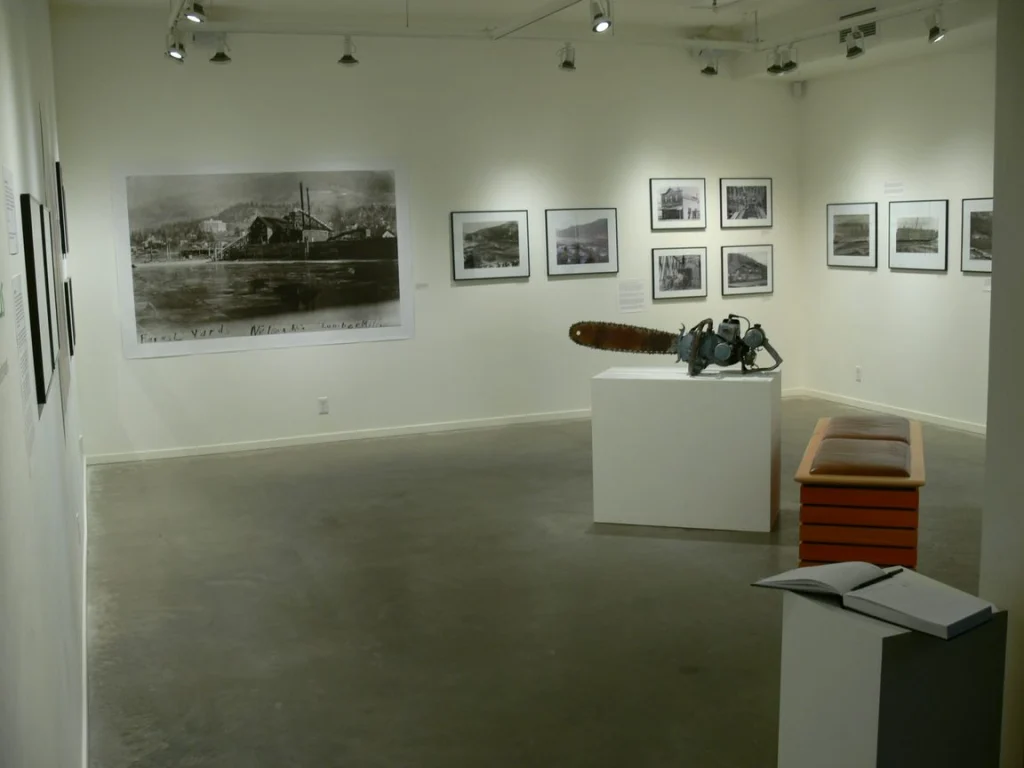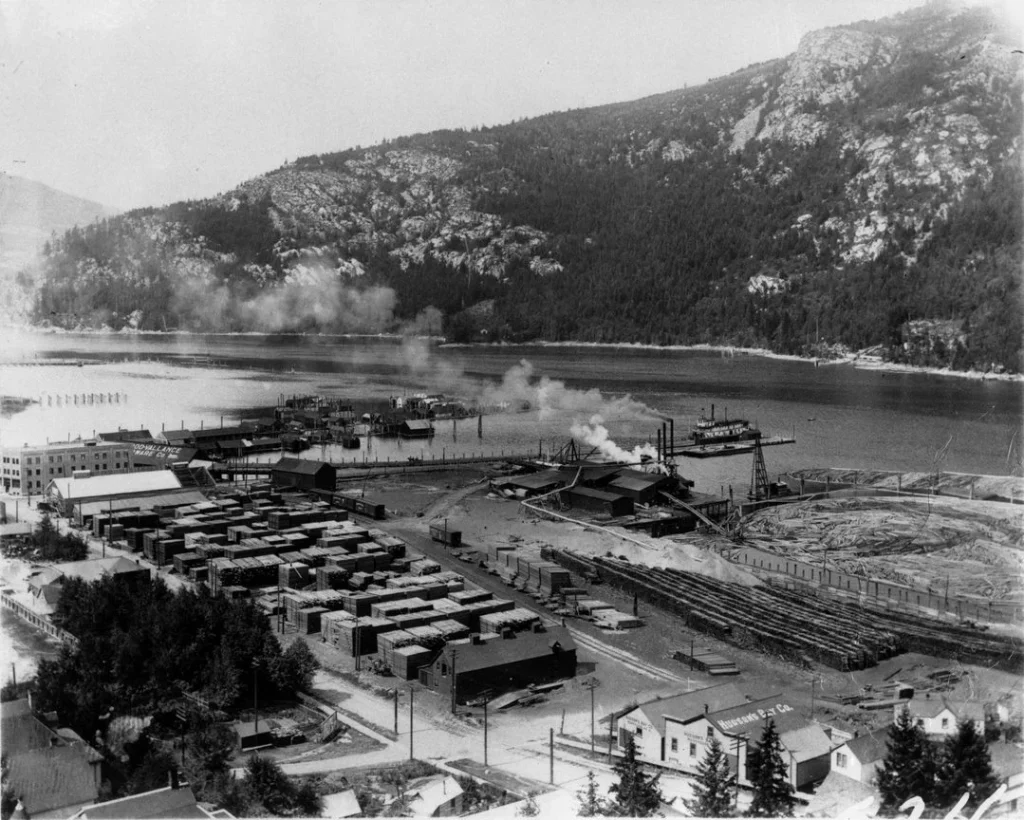Curated by Rod Taylor
Forestry is the industry that built many small communities in B.C., both literally and economically, playing an important and continually changing role in the makeup of our communities. Using photographs and other material from our Archives and Permanent Collection, this exhibit explores the history of the forest industry in our region and the many ways in which it has shaped our community.
A Brief History
Although mining brought most Europeans into the West Kootenays, forestry soon replaced it as the main economic driver of the region. Early mills tended to focus on feeding local demand for building material along with industrial uses such as mining timbers and railroad and steamship construction. Early logging relied heavily on large amounts of human and animal muscle power, usually used in conjunction with a lake or river (or both) to move the logs longer distances to the mill. They also likely had different expectations around worker safety and mortality.
As railways and then roads were built and improved in the early 20th century, mills could serve markets progressively further afield, in particular the booming Prairies. In the 30s, chainsaws and logging trucks became increasingly more common, taking the place of crosscut saws and teams of horses and transforming the industry.
After recovering from the devastation of the Great Depression in the 30s, a boom in new home construction during the late 40s, 50s and 60s produced record timber cuts and high employment for the province’s timber industry. During the same period, small sawmills were becoming progressively fewer, being replaced by ones that were larger and more centrally located.
The 1973 oil shock ended the industry’s long expansion and was accompanied by sharp declines in production volumes. Around that time, the environmental movement was also born, and awareness grew both within and outside the industry of the finite nature of the resource and the need to manage it in a more responsible and sustainable fashion. Regulation grew in response, while the market for timber and wood products proved to be turbulent in the years that followed.
Locally, the 80s saw an increasing number of logging protests and the emergence of community-based organizations such as the Slocan Valley Watershed Alliance (1982) and the Harrop-Procter Watershed and Community Protection Committee (1985). Kootenay Forest Products closed in 1984, and for the first time in almost a century there were no mills on Nelson’s waterfront.
Today, while forestry is still a significant part of the economy in our region, its role is much diminished from what it once was. There are still numerous local mills and wood processors however, and chances are if you’ve lived here for any length of time you’ve either worked in the woods (or wood related industry) yourself, or know others who have.
Thank you to Della Fenkner and Angela Schade for their invaluable assistance in the Archives, and Greg Nesteroff for generously seeking, writing and editing some of the narrative accounts you see here. Thank you also to Maureen Jansma for sharing her experience tree planting in the 70s.
See Also
Nelson Museum, Archives, & Gallery Virtual Exhibitions – A Life in the Woods
A Proud Tradition: History of the Nelson Forest Region 1897 to 2003, by Don Gayton





